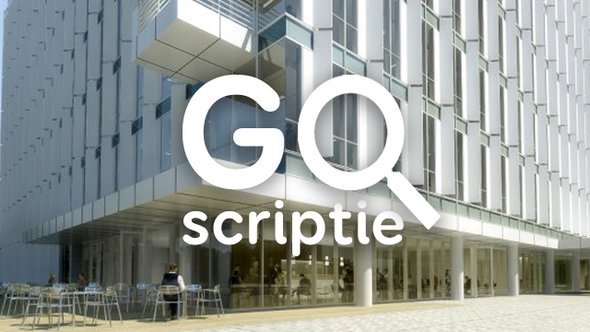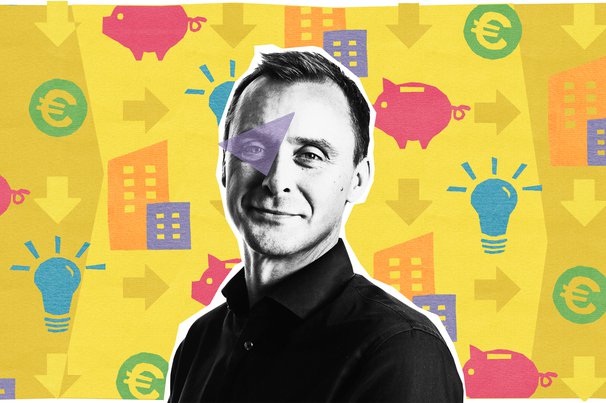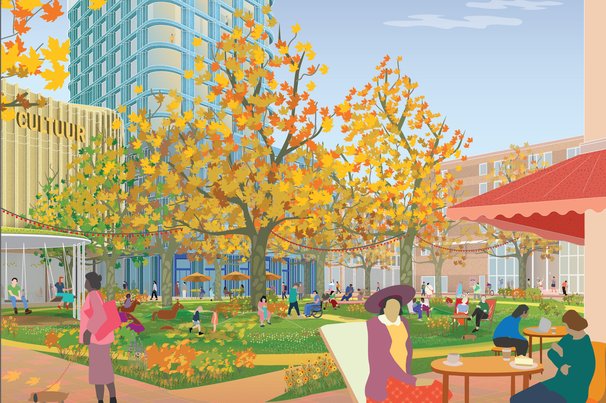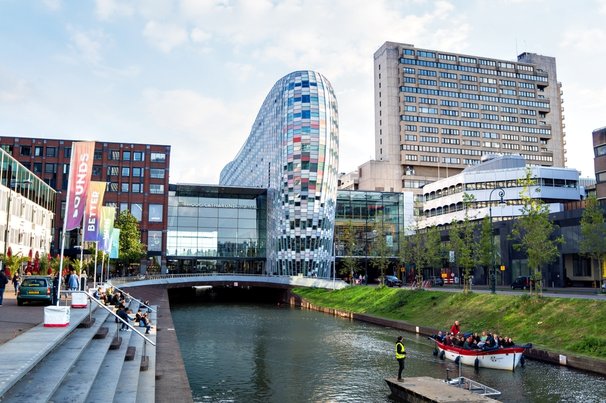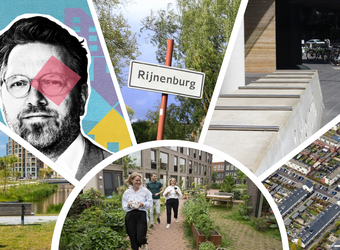Onderzoek Sustainability of the built environment has been often pushed forward by developments in the commercial office sector, in which the level of sustainability is usually measured by some form of third-party certifications as LEED or BREEAM. As well as in other countries in the Czech Republic and particularly in Prague the amount of environmentally certified offices has been rapidly increasing in past years. However, the involved actors have not yet fully acknowledged the added value of these certifications, as the willingness to pay more for the sustainability features in the office buildings remains low. The main drivers for the developers and investors were found in the financial benefits, such as increase in the asset value and none or only a small cost premium in the design and construction costs. Currently, although a lot of research has been already done in quantifying the costs and benefits of sustainability, it still remains a rather confusing area as the outcomes of these researched vary and developers and investors cannot thus rely on any hard data. The lack of data and awareness of the overall issue of sustainability were pointed out as the main barriers against the development. In the Prague context, this is also accompanied by an unstable political situation causing obstacles in the legislative process, which do not only hinder sustainable development, but development in general.
Defining sustainability drivers and barriers
In 2000 David Cadman (as cited in RICS, 2008) defined a concept called the “vicious circle of blame” in which end users, designers & constructors, developers and investors blame each other in a loop for failure to adopt sustainability in the building practices. These actors however manoeuver in an environment, which is influenced by other parties such as local and national government, suppliers, consultants, etc. and these additional actors also influence their behaviour. Different motives towards sustainable office development drive each of the actors, however these factors are often intertwined.
Corporate social responsibility has become a normative standard describing firm’s choices about inputs, internal processes and publicity (Thompson & Ke, 2012). In relation to the office market, by occupying a green office space a firm may signal a long-run commitment to the environment (Eichholtz, Kok, Quigley, 2010); same goes for a market image of developers building and for investors maintaining green office buildings. Some empirical researches demonstrate that sustainable office buildings are able to achieve rental premiums and thus yield higher profits for developers and investors, due to higher occupancy rates and possibly shorter time on market, as the certificate is used as a marketing tool attracting specific tenants (Nappi-Choulet & Decamps, 2013). The additional design and construction costs for top levels of certified office buildings are perceived as one of the main barriers against its broader implementation, it is however very difficult to identify the exact costs of sustainability as it cannot be straightforwardly recognized (Feige, Wallbaum, Janser, & Windlinger, 2013). Green buildings have however mostly thanks to the integral technological solutions and innovative energy efficient technologies proven to save costs on operation as well as maintenance (World Green Building Council, 2013). The split incentive problem, in which the receiver of the benefits is someone else than the one investing in improvements, is also addressed in an upcoming trend of green leases accompanied by other financial incentives such as green mortgages, where banks favour sustainable investments due to their lower risk levels. Lastly, in recent years more and more emphasis has been put on the intangible aspects of green buildings such as their impact on health, wellbeing and satisfaction of the occupiers. As the staff costs usually account for the highest part of the companies’ expenses, improvement of the working environment may thus have a direct impact on the organization’s financial performance (Armitage, Murugan, & Kato, 2011; Eichholtz et al., 2010).
Prague
local context
Motivations and hindrances of the
sustainable office development do not only depend on the perspectives taken
while approaching the issue, but are also formed by the national and local
context. The legislative framework play an important role, as from the
sustainability perspective a long lasting permit procedure may be of a barrier
against innovation as at the time when the building permit is achieved and the
development enters the construction phase the technologies designed in the
building may have already become obsolete.
In Prague, this has proved to be one
of the main barriers of the buildings’ development. Lack of reliable land use
regulations, long permit procedures in case of bigger developments and unstable
political situation are problems, which developers in Prague have to cope with
in their practice. In general the development of the built industry is not
perceived by the professional public to be well facilitated by either the
national government or the Prague municipality and the city lacks a
well-developed long-term strategy concerning sustainability. In contrast with
the public efforts, the Prague office sector has been moving into the
sustainable direction through private means. From 2011 a wide implementation of
the voluntary environmental certifications as LEED or BREEAM has taken place
and has currently reached a level, when basically almost every new office
building in Prague aims at certain level of one of the certifications.
Comparing the actors’ perspectives
The empirical research has
investigated the perspective of tenant, developer and investor by a Delphi
panel in combination with semi-structured interviews. The Delphi method is a method for gathering
data from respondents within their field of expertise and is used to form group
consensus about relative importance of issues (Delbecq, as cited in Koppels et al., 2007). It
consists of series of anonymous questionnaires and/or interviews in several
rounds, in which the respondents are given chance to adjust their previous
responses and thus the overall group consensus increases (Hsu & Sandford, 2007).
In this research, the respondents were asked to rank sustainability factors
connected with each of the researched perspectives according to their
importance in the decision-making. The subsequent semi-structured interviews
then examined the Prague office market state-of-the-art and its development
more in depth.
From the developer’s perspective, the financial factors as return on investment and selling price ranked the highest, which indicates prevailing financial focus of the developers in the market that leads to sustainability being viewed mostly from the economical perspective; developers invest into sustainable solutions when they expect increase in the selling price, or decrease in the time on market, influencing their return on investment. The low rank of knowledge and interest in sustainability is linked to one of the biggest barriers of sustainability, mentioned several times in the interviews, being an unsatisfactory education in the field, and the reluctance of market actors to understand the topic thoroughly. It seems that for most of the actors in the field, the sustainability issue is limited to earning points in the environmental certification systems, not giving too much effort to understand the topic in a more systematic way.
The focus on the financial factors is visible as well in investor’s perspective, factors as return on investment, exit yield or asset value being seen as the most important. In the Prague office market, the investors currently demand the office buildings in their portfolio to be certified, hoping for lower running costs and attractiveness of the buildings for prime tenants. Some respondents saw positive impacts of the certification on the building’s management, the way the building performs in the operating period and the way it is commissioned. Theoretically speaking the certified buildings should be more energy efficient than ordinary buildings, saving on the costs of operation. However, in practice this is not always the case, perhaps due to behaviour of the occupiers not operating the building as supposed to, commissioning reports not filled in according to actual data, or that the energy efficiency was not given too much emphasis in the building’s design and certification process.
The tenant’s perspective showed by far the lowest consensus among respondents, proving that is very difficult to define “tenants” as one homogeneous group as tenants consist of various companies operating in different fields, and by companies of different sizes and nationality. The research showed importance given to rent level, however also spotted a trend of putting more emphasis on the wellbeing of the employees, using sustainable aspects of a building in which their office is located in as triggers for attracting and keeping skilful workforce. The internal company regulations as well as the personalities of the management have also big impact on the company’s standpoint towards sustainability.
Most important sustainability drivers and barriers
The theory suggests that the vicious circle of blame may be broken by tenants as the markets are usually tenant-driven. However, in practise if an accelerated development of sustainable offices was aimed for, the push would probably have to come from all the involved actors simultaneously and they would thus influence one another in the decision making through adjusting demand and supply. Particularly in Prague this must be accompanied by much better performance from the municipality side if the aim is to turn the development of offices into a truly sustainable one.
Cover: ‘cover’
